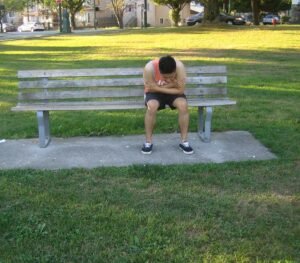Dry eye syndrome is likely to occur if the eyes generate fewer tears and unable to provide normal lubrication to the eyes. It can also occur if the lacrimal glands are impaired or if tears evaporate rapidly than usual.
What are the risk factors?
Dry eye syndrome can be brought about or worsened by various factors such as:
- Certain medications
- Normal age-related drop in the tear production
- Hormonal changes especially in the production of the female hormone estrogen
- Eye injuries
- Direct exposure to fans or hair dryers
- Wearing soft contact lenses that absorbs tears
- Staying in heavily air-conditioned environments
Allow the eyes to rest by taking a break from the TV, books or computer screen. - Dusty, windy, smoky, dry or warm weather conditions
- Scenarios in which blinking is reduced such as staring at a computer screen, watching TV or driving
What are the indications?
Dry eye syndrome usually involves mild to moderate irritation of the eye. If left untreated, it can result to eye infections or even lasting damage to the eyes.
Diagnosis
Any individual who experiences dry eyes must consult a doctor. The doctor will ask the individual about his/her eye history and conduct a physical exam. The individual is also asked if he/she had any eye issues such as burning sensation, feeling of a foreign body and sensitivity to light.
Management
The main objective is to control the symptoms and possible eye infections that might arise if the eyes are dry or damaged. In a mild case, it is ideally managed using lubricants or artificial tears. Remember that these treatment options will not cure the syndrome. Nevertheless, the eye drops can provide momentary relief by moisturizing and lubricating the eye.
Make sure that the artificial tears used do not contain any preservatives since these can lead to additional eye irritation. Other choices for mild cases include the following:
- Increase blinking
- Allow the eyes to rest by taking a break from the TV, books or computer screen
- Drink 6-8 glasses of water daily to ensure proper hydration
- Protect the eyes from windy or sunny environments by wearing sunglasses
- Wear glasses instead of contact lenses
- Avoid prolonged exposure to air-conditioning or smoke
In severe cases of dry eyes, they are managed using steroids and other medications to minimize inflammation. Other measures include brief or permanent blocking of the tear ducts to stop drainage of tears.

